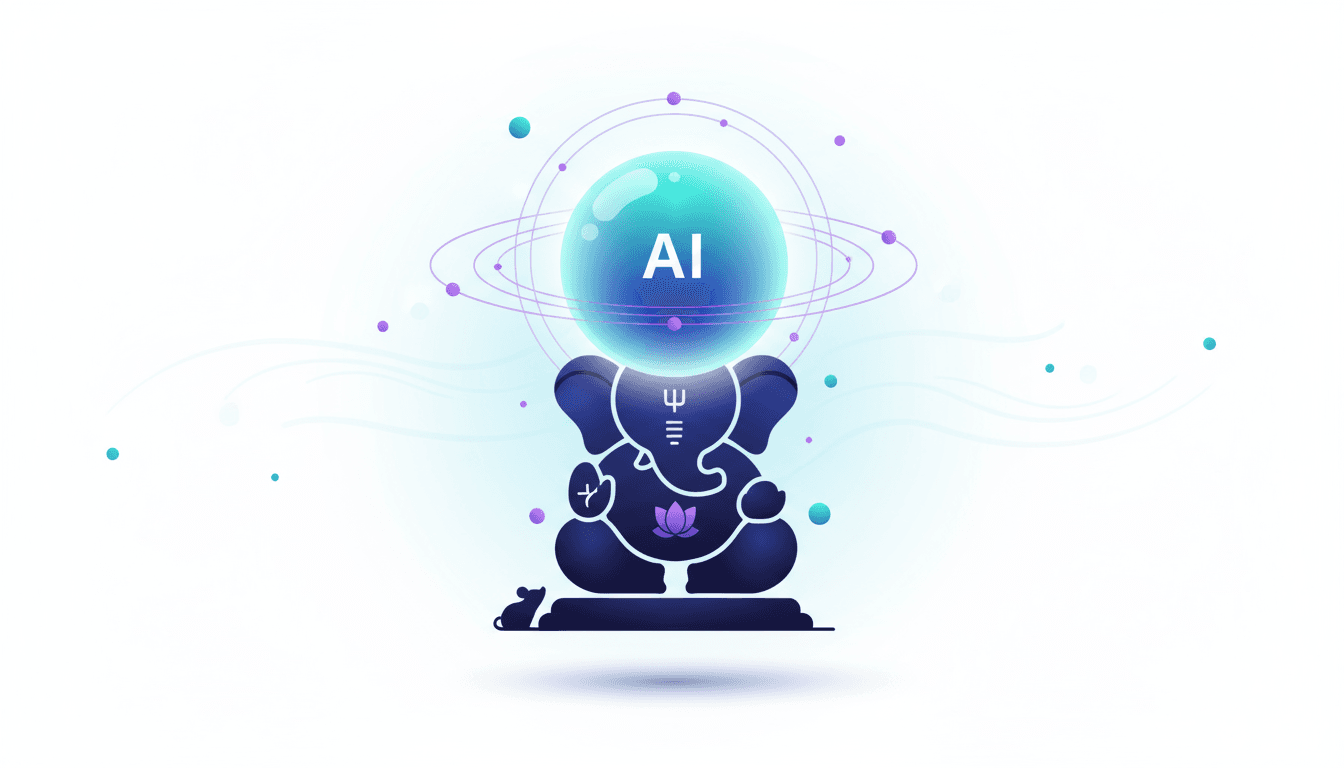GPT-5.1: OpenAI's Instant vs Thinking AI Models

⚡ Quick Take
Ever wondered if one AI model could truly do it all, or if we're finally ready to pick the right tool for the job? OpenAI's rollout of GPT-5.1 is splitting its flagship into two specialized variants: GPT-5.1 Instant for those low-latency needs and GPT-5.1 Thinking for deeper reasoning tasks. It's a clear pivot from that one-size-fits-all mindset to something more layered - forcing developers and enterprises to weigh speed against cost and brainpower, you know, the real trade-offs that matter.
Summary: From what I've seen in the leaks and now the official word, OpenAI has kicked off the GPT-5.1 rollout. This brings two fresh models to the table - GPT-5.1 Instant and GPT-5.1 Thinking - starting with paid ChatGPT users. It's all about nailing that balance between quick responses and heavy-duty thinking, ditching the old "just make it better and faster" routine for something more deliberate.
What happened: OpenAI slipped the GPT-5.1 details into their release notes, putting the Instant and Thinking variants front and center. They're pitching it as the key to "smarter, warmer conversations," but at heart, it's this smart architectural divide - tailored for everything from casual chats to in-depth breakdowns.
Why it matters now: That old world of a single, do-everything flagship model? It's fading fast. OpenAI's move here pushes everyone to grow up a bit, choosing the best fit instead of leaning on one pricey powerhouse for every little thing. And it puts real heat on rivals like Google with their Gemini Flash and Pro setups, or Anthropic's Haiku, Sonnet, and Opus lineup - all scrambling to sharpen their tiered options and that all-important performance-per-dollar math.
Who is most affected: Developers and enterprise AI folks feel this one right away - I mean, they're the ones rebuilding evaluation setups, running A/B tests, and sorting out how to route tasks to the right GPT-5.1 flavor. Product managers, too, will have to rethink user flows to handle the quirks in speed and smarts.
The under-reported angle: Sure, the new features grab headlines, but the bigger headache is the nuts-and-bolts side of things. OpenAI dropped these models without the full scoop on benchmarks, API how-tos, or clear costs and delays - leaving teams to puzzle out evaluations, tweak prompts, and manage risks solo. What should be a straightforward upgrade turns into a full-on engineering lift, plenty of reasons to tread carefully there.
🧠 Deep Dive
Have you caught yourself frustrated with an AI that's either blazing fast but shallow, or deep but drags on forever? That's the bind OpenAI's tackling head-on with GPT-5.1 - a real turning point in this AI landscape, steering us from the raw chase for bigger brains to a smarter game of slicing up the market. Sure, the press releases tout those "smarter, warmer conversations," but dig a little, and the tech and business angles steal the show. Bringing in GPT-5.1 Instant and GPT-5.1 Thinking basically admits that no single LLM can juggle every demand efficiently anymore, not with how wild applications are getting these days.
This two-lane setup? It's straight-up engineering wisdom at work. The Instant version is tuned for quick hits and wallet-friendly runs - think chatbots that keep the flow going, speedy summaries, or sorting content on the fly, where a snappy reply makes or breaks it. Then there's Thinking, the heavier hitter - slower, pricier, but built for those multi-step puzzles, tricky code, or crunching data, where real insight trumps waiting around. It's echoing what competitors are doing, a sign the whole field's leaning into these tiered services now - convergence, if you will.
That said, OpenAI's rollout leaves a bit of a gap, doesn't it? For the devs and decision-makers diving in, the buzz - from those speculative code breakdowns on YouTube to the straightforward changelogs - skips the gritty hows of making it real. Folks are left wondering: How do the latencies stack up exactly, or the context windows? What about scores on GSM8K or MMLU tests? And those fresh pitfalls or biases we need to watch? Without the details, jumping to GPT-5.1 feels like a gamble, full of tests and tweaks.
It piles on the load for enterprise teams, too - building out choice maps for models, solid A/B setups for their own scenarios, bracing for API shifts and prompt overhauls. The upside of sharper AI comes hand-in-hand with crafting your own smarter systems to handle it all. In the end, GPT-5.1's win in big shops won't hinge just on its IQ, but on how well companies map this split-up world - a fragmented setup that could spark real innovation, or just extra headaches.
📊 Stakeholders & Impact
Stakeholder / Aspect | Impact | Insight |
|---|---|---|
AI Developers & Ops | High | They'll need to roll up sleeves right away for fresh evaluation tools, routing smarts, and monitoring setups to juggle these two models - it ramps up the daily grind, but opens doors to fine-tuning costs against performance in ways that really pay off. |
Enterprise Buyers | High | It's flipping the script on buys - no more settling for one top model; now it's about piecing together a model mix that fits. Demands a sharper eye on those cost-vs.-output balances across teams and projects. |
OpenAI | Significant | Smart play to snag more of the market, from cheap chat tools to premium thinkers - but if the lines blur, it could leave customers scratching their heads over what to pick. |
Competing LLM Providers | Significant | Lights a fire under Google, Anthropic, Meta, you name it - time to spell out why their tiers (like Haiku against Opus) shine, battling it out on brains, bucks, and everything in between. |
End Users | Medium | Could mean zippier bots with Instant or sharper insights from Thinking, though it'll all come down to how teams weave these in - the real feel might vary wildly by app. |
✍️ About the analysis
This take from i10x pulls together an independent read on OpenAI's official notes, what's out in the news, and the tough spots we've seen in rolling out enterprise AI. It's geared toward developers, engineering leads, and CTOs - the ones knee-deep in crafting, launching, and growing apps that run on these powerhouse language models, drawing from real-world hurdles along the way.
🔭 i10x Perspective
What if GPT-5.1's split isn't just an update, but a wake-up call that AI services are heading toward specialists over superheroes? OpenAI's laying it out plain: we're done chasing that mythical "best single model" - time to design like architects, balancing cost, zip, and smarts as the building blocks.
I'd bet this kind of carving up speeds along the shift where base models become everyday tools, shoving the real fight to tweaks, quick runs, and smart layering. The big question hanging? Does this give builders more options to play with, or just bog them down in the mess? Looking five years out - and I've thought about this a fair bit - the real standouts won't be the ones with the brightest bulb, but those smoothing the road for turning raw smarts into dependable, smart-spending products that actually deliver.
Related News

Grok AI Recognizes Lord Ganesha: xAI's India Strategy
Elon Musk's viral test of Grok AI identifying Lord Ganesha highlights xAI's cultural intelligence, positioning it against competitors in India's market. Explore the strategic implications and AI's evolving cultural fluency.

Baidu ERNIE Benchmarks: Challenging GPT-4o and Gemini
Explore Baidu's latest ERNIE models, including ERNIE 4.5 and X1.1, claiming top performance in text and multimodal AI benchmarks. Analyze implications for enterprises and the need for independent verification. Discover key insights.

Baidu ERNIE-4.5-VL: Efficient Open-Source Vision AI
Discover Baidu's ERNIE-4.5-VL, an open-source vision-language model using sparse MoE architecture for top performance with just 3B active parameters. Ideal for cost-effective multimodal tasks like document and video analysis. Explore its impact on AI deployment.